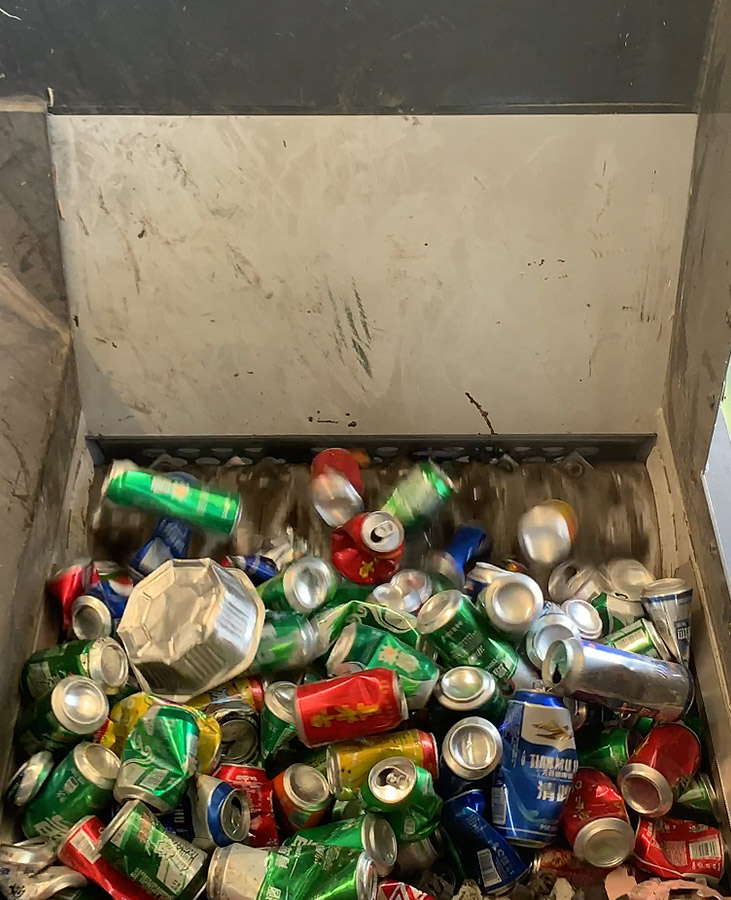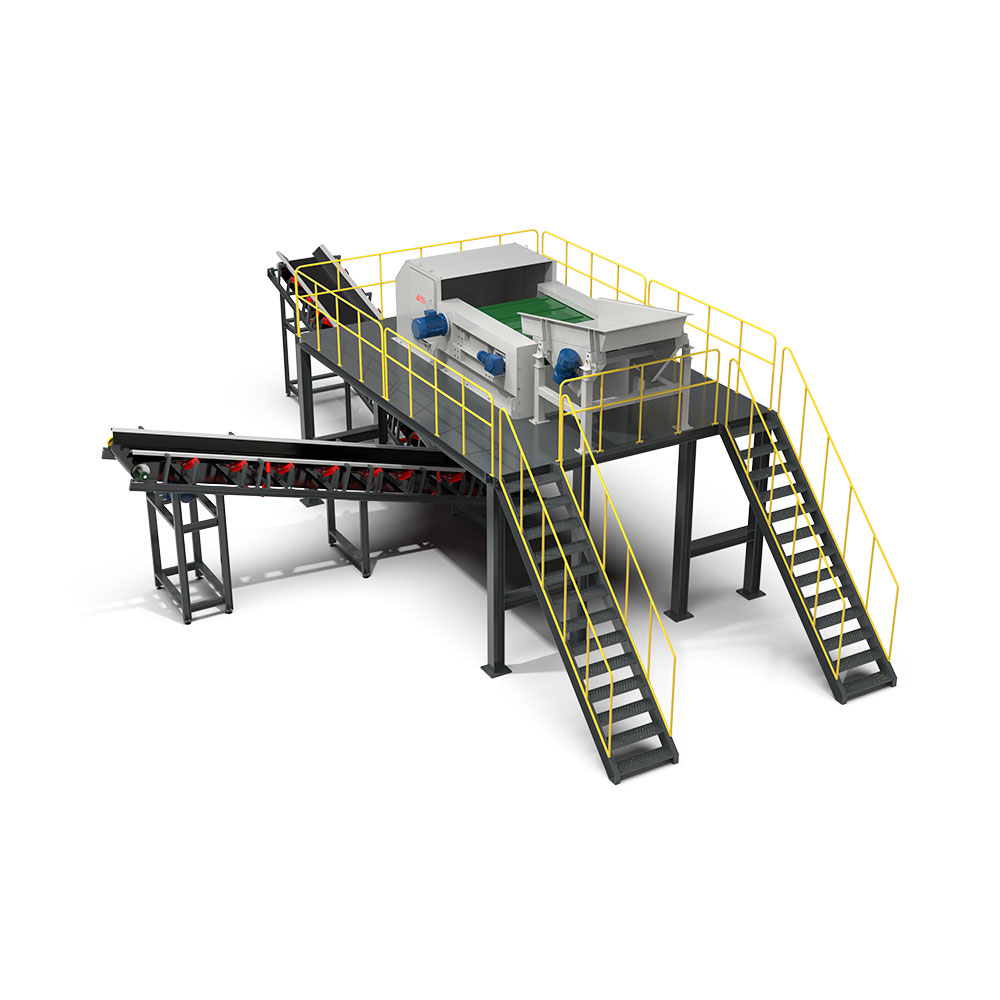Что такое измельчитель алюминиевых банок?
Содержание
- Измельчители алюминиевых банок
- Ключевые особенности трех типов измельчителей алюминиевых банок
- Промышленные алюминиевые измельчители банок
- Как работают промышленные измельчители алюминиевых банок
- Факторы, влияющие на цену измельчителей алюминиевых банок
- Часто задаваемые вопросы об измельчителях алюминиевых банок
- Заключение
Измельчители алюминиевых банок
Измельчитель алюминиевых банок — это машина, предназначенная для измельчения алюминиевых банок на более мелкие кусочки с целью переработки. Эти измельчители могут обрабатывать большие объемы банок, Повышение эффективности процесса переработки. Существуют разные типы измельчителей алюминиевых банок, начиная от небольших, Модели с ручным управлением до больших, Промышленные машины.
Ключевые особенности трех типов измельчителей алюминиевых банок:
| Особенность | Промышленный | Маленький | Вручную |
| Способность | Высокие тысячи банок в час | УмеренныйПодходит для небольших партий | Низкий, по одному за раз |
| Операция | Электрический,Автоматизированная подача | Электрический или ручной | Ручное управление Ручное управление |
| Размер | Большой,Требует значительного пространства | Компактностьподходит для небольшого пространства | Очень компактный, портативный |
| Долговечность | Чрезвычайно прочный,Создан для непрерывного использования | Прочный, но менее прочный, чем промышленный | Прочный для регулярного домашнего использования |
| Функции безопасности | Усовершенствованные механизмы безопасности | Основные функции безопасности | Основные функции безопасности |
| Стоить | Высокий | Умеренный | Низкий |
| Энергоэффективности | Разработан для повышения энергоэффективности | В целом эффективность | Не требует энергии |
| Содержание | Требует регулярного технического обслуживания | Минимальное техническое обслуживание | Минимальное техническое обслуживание |
| Портативность | Стационарная установка | Портативный | Высокая портативность |
| Пример использования | Центры переработки, Металлообрабатывающие мощности | Домашнее использование, Малый бизнес | Домашнее использование, мелкосерийная переработка |
В данной таблице выделены ключевые отличия и особенности промышленных, маленький, и ручные измельчители алюминиевых банок, которые помогут нам определить оптимальный вариант исходя из конкретных потребностей. Следующий, Мы сосредоточимся на промышленных измельчителях алюминиевых банок.
Промышленные алюминиевые измельчители банок:
Промышленные измельчители алюминиевых банок — это сверхмощные машины, предназначенные для эффективной работы с большими объемами банок. Их используют в центрах переработки, Металлообрабатывающие мощности, и других промышленных условиях. Эти измельчители надежны, прочный, и способные к непрерывной работе для управления высокой пропускной способностью.
Как работают промышленные измельчители алюминия:
-
Кормление
- Входной бункер: Алюминиевые банки загружаются в большой бункер или конвейерную ленту. Бункер может обрабатывать большие объемы, Обеспечение непрерывной подачи.
- Автоматизированная система кормления: Во многих промышленных установках, Система конвейерной ленты автоматически подает банки в измельчитель, Обеспечение стабильного и контролируемого потока.
-
Измельчения
- Режущий механизм: Банки втягиваются в измельчитель, где они сталкиваются с вращающимися лезвиями или молотками из закаленной стали. Эти режущие механизмы предназначены для резки, слеза, и раздавить алюминий.
- Первичное измельчение: Первоначальный набор лезвий или молотков начинает резать банки на более мелкие, Более удобные в управлении элементы.
- Вторичное измельчение: Некоторые промышленные измельчители имеют несколько ступеней измельчения, чтобы обеспечить тонкую обработку материала.
-
Сепарация и сортировка

- Магнитная сепарация: После измельчения, Детали могут проходить через магнитные сепараторы для удаления железа (железосодержащий) Загрязнений, Гарантия того, что останется только алюминий.
- Воздушная классификация: Воздушные классификаторы или воздуходувки могут использоваться для отделения более легких алюминиевых фрагментов от более тяжелых загрязнений или других материалов.
-
Вывод и сбор
- Выходной конвейер: Измельченный алюминий обычно удаляется от зоны измельчения с помощью конвейерных лент.
- Контейнеры для сбора: Измельченный материал собирается в бункеры или контейнеры для дальнейшей переработки, такие как тюкование или плавка.

-
Функции безопасности и эффективности
- Защитные ограждения: Промышленные измельчители оснащены различными функциями безопасности, такими как кнопки аварийной остановки и защитные ограждения для защиты операторов.
- Защита от перегрузки: Многие машины оснащены датчиками для определения условий перегрузки и автоматического отключения или уменьшения скорости подачи для предотвращения повреждений.
- Энергоэффективности: Современные промышленные измельчители разработаны для максимальной энергоэффективности, Снижение эксплуатационных расходов и воздействие на окружающую среду.
-
Системы управления
- Автоматизированные пульты управления: Операторы используют панели управления для управления и контроля процесса измельчения, Регулировка скоростей, Нормы подачи, и другие параметры по мере необходимости.
- Системы мониторинга: Усовершенствованные системы могут включать мониторинг и диагностику в режиме реального времени для обеспечения оптимальной производительности и быстрого поиска и устранения неисправностей.
Факторы, влияющие на цену измельчителей алюминиевых банок:
-
Конфигурация измельчителей алюминиевых банок
- Тип и материал лезвия: В различных измельчителях используются различные конфигурации лезвий и материалы (например., сталь) Для долговечности и эффективности.
- Мощность двигателя: Варьируется от 50 HP до более чем 500 Мощность в зависимости от размера и производительности измельчителя.
- Бренд и производитель: Авторитетные бренды с историей надежности и производительности существенно повлияют на его стоимость.
- Настройка: Машины, адаптированные для конкретных областей применения или со специальными конфигурациями, могут быть более дорогими.
-
Дополнительные расходы
- Доставка и транспортировка: В зависимости от местоположения, Транспортировка большого измельчителя шин может добавить несколько тысяч долларов к общей стоимости.
- Установка и настройка: Профессиональная установка и настройка будут затратами.
- Техническое обслуживание и запасные части: Текущее техническое обслуживание и стоимость запасных частей должны быть учтены в общем бюджете.
Часто задаваемые вопросы об измельчителях алюминиевых банок
Q:В чем преимущества измельчителей алюминиевых банок ?
A: Позволяет извлекать ценные металлы, такие как алюминий; снижение затрат на транспортировку и хранение.
Q: Какова цена измельчителя алюминиевых банок ?
A: Цена измельчителя алюминиевых банок может значительно варьироваться в зависимости от его размера, способность, Размер разгрузки, марки автомобилей и так далее.
Заключение:
Измельчители алюминиевых банок необходимы для переработки отходов, Помощь в сокращении отходов и эффективной переработке материалов. При выборе измельчителя алюминиевых банок, Важно учитывать такие факторы, как тип материалов, объем материала, Размер разгрузки , Место для установки и бюджет.
 Шредер Страж
Шредер Страж